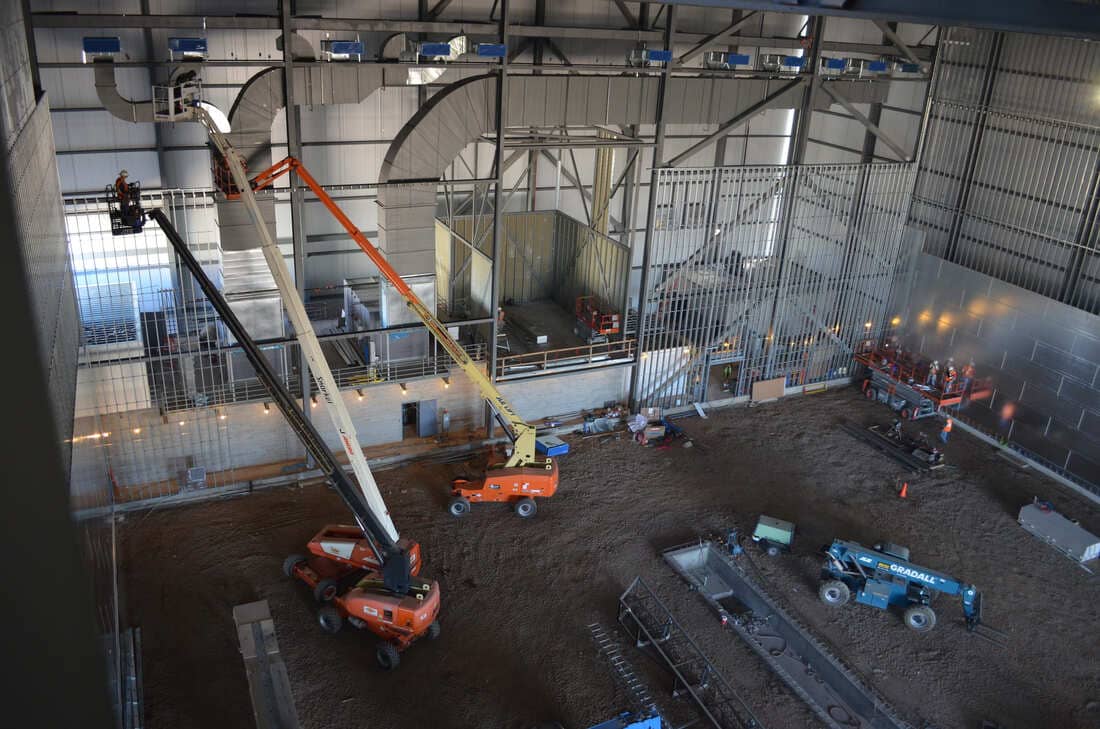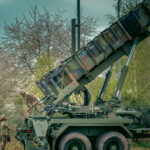On July 24, Italy moved forward with a major defense project as L3Harris Technologies and ELT Group signed an agreement to build Europe’s first multi-sensor calibration and flight-test center. The signing took place inside a Ministry of Defense hangar in Rome. The new installation will let Italian and allied aircraft check radar, electronic warfare, and navigation systems without needing to travel to the U.S. The facility draws on L3Harris’ experience with its Greenville, Texas range and ELT’s long history in electromagnetic support.
L3Harris executive Jon Rambeau said the project is aimed at keeping advanced aircraft ready for operations not only in Italy, but across Europe. ELT’s Domitilla Benigni noted that it also strengthens Italy’s control over testing and opens new doors for domestic suppliers.
Multi-Domain Calibration Facility Designed for Radar and EW Payload Validation
The design features a network of fixed towers, mobile vans, and retractable masts that can reproduce a wide variety of signals, from civilian VHF beacons to advanced military radars. Brian Solomon from L3Harris said the system is built to cover everything, including secure satellite-navigation signals needed for anti-spoofing tests.
Plans also include a shielded bunker with calibration benches able to measure to within hundredths of a decibel-important when trying to tell friend from foe in dense signal environments.
While the government hasn’t officially announced the site, procurement records point to a former training ground in Lazio that already meets electromagnetic quiet-zone standards. A senior official confirmed that survey teams are currently analyzing the terrain and soil to ensure clean antenna patterns once the equipment is installed.
Locating the site in central Italy will shorten flight times for the Italian Air Force and keep the runway away from coastal humidity, which can interfere with high-frequency testing.
New Calibration Capabilities for EA-37B, JAMMS, Naval and Ground Systems
Several techniques from L3Harris’ Texas operations are being brought in. One involves building a threat database directly into the site’s secure server, so red-force signal data can be loaded onto emitters without having to ship drives from the U.S. Another includes using fiber-optic links to send test data directly from the antenna range to ELT’s lab outside Rome, allowing engineers to start analysis within minutes of landing.
Two programs are already signed up to use the range. On July 21, Italy ordered two EA-37B Compass Call aircraft for $300 million. These modified G550 jets depend on highly accurate alignment and constant recalibration against real radar signals to keep their jamming systems current. Right now, those checks happen in the U.S., and can ground aircraft for weeks. With the new facility, those same checks could be done with a short round trip from Pratica di Mare.
Another major system, the Joint Airborne Multi-Mission Multi-Sensor System (JAMMS), will also benefit. This platform combines radar, electronic intelligence, and optical systems into a single aircraft. Italian operators will need to run frequent test flights to make sure everything stays aligned during high-stress maneuvers. Industry insiders say that having a local range will speed up testing and cut risks in system integration.
The facility is designed to serve more than just airborne platforms. ELT plans to bring in its shipborne systems so the Navy can measure sensor performance in a controlled setting. The Army will also have a site to test communications gear and counter-drone technology under realistic conditions. Industry contacts report that several NATO countries have already shown interest in booking time at the range once it becomes operational.
Secure Threat Simulation and Real-Time Spectrum Analysis Infrastructure
Security procedures are also being upgraded. Sensitive software for threat simulation will be handled under a shared-control system. U.S. engineers will deliver encrypted files, Italian teams will load them using a one-way transfer, and both sides will study the resulting data. This setup keeps U.S. source code secure while letting Italy operate independently, in line with arms regulations and data protection laws.
The technical setup includes:
- A multi-band antenna field with absorbers to block signal reflection
- Mobile emitter units simulating advanced air-defense and naval radars
- A zone for spoofing-resistant navigation testing
- A sealed, climate-controlled RF bunker for high-precision calibration
- A 3-kilometer runway with beam-tracking radar for detailed position logging
- Direct fiber connection to ELT’s lab for immediate data review
Italy’s defense ministry expects local suppliers to provide around two-thirds of the facility’s hardware. That includes companies that produce waveguides, low-profile radome panels, and convert diesel trucks into mobile test vans. Around 200 jobs are expected during construction, with more to follow once the site is fully active-figures consistent with other large defense projects.
The Air Force Flight Test Wing plans to include range flights in pilot training, giving students a chance to run real-world electromagnetic tests before overseas deployment. On the academic side, the Politecnico di Torino is working on a deal that would let engineering students use non-classified data for research projects. Faculty members say they’re eager for students to work with live data instead of relying solely on simulations.
NATO Readiness and Italy’s Defense Industry
Strategists at NATO view the site as a valuable addition to Europe’s testing infrastructure. While Souda Bay supports electronic warfare integration, it doesn’t offer the fine-grain calibration needed for airborne sensors. Italy’s new range addresses that shortfall and offers a Schengen-area location that avoids delays tied to cross-border equipment transfers. Once a secure NATO network extension is completed later this year, data exchange across ranges is expected to begin.
Construction will begin after the Ministry of Defense approves the environmental review, likely in early September. The project will be completed in three phases: civil works and fiber installation by spring 2026, tower and bunker installation by winter, and flight tests starting by mid-2027. No official budget has been released, but funding is listed in Italy’s 2026 defense plan under testing infrastructure. If those allocations stay in place, the range will be operational before the EA-37B enters service.
The center is expected to:
- Boost aircraft readiness by allowing regular on-site testing
- Lower long-term maintenance costs by avoiding overseas trips
- Speed up software updates and database changes under Italian control
- Provide a training environment for NATO units
- Help grow Italian technical expertise in RF testing
This project gives Italy a way to support its growing fleet of special-mission aircraft while reducing reliance on foreign facilities. It connects the country’s industrial base to advanced defense work and creates a central hub for electromagnetic testing in Europe.
REFERENCE SOURCES
- https://theaviationist.com/2025/07/24/multi-sensor-isr-test-facility-in-italy/
- https://www.l3harris.com/newsroom/press-release/2025/07/l3harris-and-elt-group-establish-multi-sensor-test-facility-italy
- https://breakingdefense.com/2025/07/l3harris-and-elt-group-team-up-on-italian-isr-multi-sensor-test-facility/
- https://www.janes.com/osint-insights/defence-news/c4isr/italy-to-select-site-for-l3harris-and-elt-group-multisensor-test-facility
- https://euro-sd.com/2025/07/major-news/45651/l3harris-elt-group-test-centre/
- https://www.edrmagazine.eu/l3harris-technologies-partners-with-elt-group-to-establish-a-multi-sensor-test-facility-in-italy



